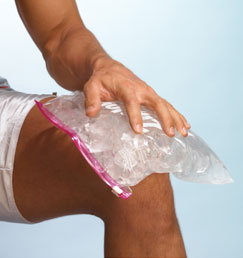Know Pain. No Pain.
Know Pain. No Pain.
Last month I wrote a blog post that opened our eyes to the ‘actual’ healing process of the human body as well as some research that educated you about what is really happening with your injuries. Understanding is the first step in an effective and efficient recovery.
This month, I want to continue our journey into this subject and dig a bit deeper into the pain that is often associated with injuries; acute & chronic. When we experience pain, we immediately link the pain to the area. Lets take a common pain complaint that all of us at one time or another will experience at least once in our lifetimes; low back pain.
I have treated patients over the years that have shown me MRI’s indicating disc herniation, yet either have no pain or the pain they are experiencing is not due to the disc pathology. I have also treated patients with perfectly healthy spines with no specific mechanisms suggest why they can barely move without feeling excruciating pain. How is it possible that someone who has a herniated disc experiences no pain at all and someone with a relatively healthy history is in excruciating pain? Well, what if I told you that the pain we feel is not due to the injury in your low back, but rather how your brain perceives the messages being sent from your low back. In other words, the ‘issue is not in the tissue’.
“100% of the time, pain is a construct of the brain” - Dr. Lorimer Mosely, Clinical Neuroscientist
Now before you think this is headed down the path of ‘it’s all in your head’, hang on a second. Technically, I suppose that since your brain is in your head, it is in your head, but it not as simple as that. You can’t simply just will your pain away or think happy thoughts. It is not a question of mind over matter.
We all learned in grade school the simple connect-the dots understanding of pain.
Step 1: You touch a hot surface
Step 2: A pain signal is sent up the arm to the brain
Step 3: The brain processes information and sends a message back to withdraw the finger from the hot surface.
Step 4: Say ‘Ouch!’
No, not exactly.
This was based on the Cartesian model of thinking proposed by the philosopher Descartes almost 450 years back. Descartes wrote, “The flame particle jumps from the fire, touches the toe, moves up the spinal cord until a little bell goes off in the brain and says, ‘ouch. It hurt’.” We have made a few tweaks to this theory over the years, yet in spite of more knowledge and understanding about pain, we are STILL not 100% clear about how to actually treat it effectively.
 The human body has many different ‘receptors’ that allow us to gather information about our environment. We don’t simply have ‘pain’ receptors that tell us we are in pain. We have many different sensory sensing receptors called ‘nociceptive’ and ‘non-nociceptive’ receptors that sense temperature, pressure, and chemicals. The only difference between the two is that the nociceptors have a higher threshold than the non-nociceptors and are only activated when the stimuli is in the higher range. Contrary to what most people believe they don’t send ‘pain’ signals, they send the same signals as other non-nociceptors but just at a higher threshold.
The human body has many different ‘receptors’ that allow us to gather information about our environment. We don’t simply have ‘pain’ receptors that tell us we are in pain. We have many different sensory sensing receptors called ‘nociceptive’ and ‘non-nociceptive’ receptors that sense temperature, pressure, and chemicals. The only difference between the two is that the nociceptors have a higher threshold than the non-nociceptors and are only activated when the stimuli is in the higher range. Contrary to what most people believe they don’t send ‘pain’ signals, they send the same signals as other non-nociceptors but just at a higher threshold.
Confused yet?
In other words, there is no signal of ‘PAIN’ that goes to the brain from the body. There is only a message that is transmitted to the brain. The brain than decides what to do with this information, all in a matter of milliseconds, based upon previous experiences and several other bits of information ‘you’ have no access to. It than determines, based upon this information, what message it wants to send back to the area that just delivered the message.
At the risk of losing you at this point, I have embedded this outstanding TEDX video by one of the worlds most highly regarded clinical neuroscientists, Dr. Lorimeer Mosely. He delivers a brilliant synopsis of how we interpret pain in both a stand-up comedy style delivery without using the big words that will surely make us all feel inferior.
Take Away
I hope this post and the following video offer you some insight about how the human body ‘experiences’ pain and that it will help you to understand it better when confronted with it in the future.
Ready to #feelbetter?
You're just a click away from a wicked good massage!
-

60 Minute Massage Gift Card
$170.00 Add to cart -

90 Minute Massage Gift Card
$255.00 Add to cart -

Mini Aer Small Room Air Purifier
$149.00 Add to cart -
Sale!

Thera-Pearl Sports Pack/Hot Cold
Original price was: $14.99.$12.99Current price is: $12.99. Add to cart -

3 Somadome Sessions Gift Card
$135.00 Add to cart -

20 Minute Somadome Gift Card
$45.00 Add to cart -
Sale!

TheraBand® Stretch Strap
Original price was: $19.99.$14.99Current price is: $14.99. Add to cart -

TheraBand CLX Connective Loop
$14.99 Select options
May Flowers-Life Hack
April Showers Bring 5 Flower Hacks What do you get when you combine soda, vodka, apple cider vinegar, hair spray & bleach? Some incredible ways to preserve your flowers this season. Sure, April showers bring May flowers, but mother nature went a tad over board with it this April. So how well are you prepared…
Read More#FeelBetterBoston Recap
#FeelBetterBoston Recap The inaugural #FeelBetterBoston Massage & Community Wellness event over Marathon weekend left people with a smile on their face and genuine appreciation for all that was provided. We knew this being the first time we held such an event that we would be competing with the likes of the infamous BAA Expo and other…
Read MoreHow Do You Roll??
How Do You Roll?? Are Foam Rolling Advocates Stretching the Truth? Foam rolling is one of the most common means of self-care for so many people. It has been thought to provide many benefits such as enhanced performance, improved flexibility and speed, pain reduction and muscle recovery. Often it is referred to as a self-massage technique,…
Read MoreOn the Mend
On the Mend As we quickly approach the holy grail of running events, the Boston Marathon, we start to see a rise in our battered and beaten road warriors. Overuse conditions from months of increased training, acute injuries from falls on slippery roads and chronic aches and pains, all result in the patient surrendering to…
Read MoreLife Hack: Watch the SB LIII on TV, but LISTEN on the Radio
Life Hack: Watch the SB LIII on TV, but LISTEN on the Radio So, our beloved Pats are back in the big game again. I’m not going to relay stats and numbers that drive home the dynasty known as the New England Patriots. We are all aware of them. However, if you want to enjoy…
Read MoreCortisone Injections: Yay or Ney?
Cortisone Injections: Yay or Ney? As massage therapists, we often see patients who have been struggling to find an answer for a particular pain problem. Some of these cases are acute (sudden onset) where others may be chronic (reoccurring over a long period of time). It is not uncommon to have a patient ask us…
Read MoreChiropractic Care at The Boston Bodyworker
Chiropractic Care at The Boston Bodyworker We are excited to announce the arrival of Dr. Jean Kelly of Momentum Healthcare to our office. Dr. Kelly has been practicing in our building for the past 10 years and has been a friend to The Boston Bodyworker for almost 20 years. We are honored to have her…
Read MoreSpine Health: Don’t Ignore It!
Spine Health: Don’t Ignore It! The new year always provides us with the feeling of having a clean slate. Let’s face it, most of us don’t take very good care of our spines. 2019 can be the year that your resolutions come true. This lack of care can lead to physical discomfort and make us…
Read MoreLife Hack: Drink Tea
Life Hack: Drink Tea With the rainiest and most dreary Fall in recent time behind us and winter now in full swing, the need for us to provide optimal care for ourselves is high. Despite American’s love affair with coffee, tea is really the more versatile of the beverages. Most of us reach for a…
Read MoreLife Hack: Forward Head Posture
Life Hack: Forward Head Posture How many times in the course of a day do you roll your shoulders and neck around to alleviate “the spot” in between your shoulder blades. There are several reasons for the discomfort you are experiencing, but one way to resolve this is to do what is known as a…
Read More



